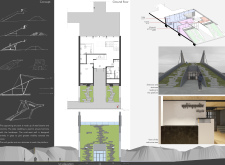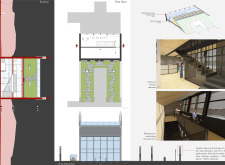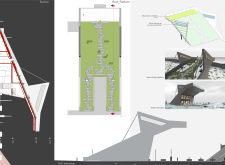5 key facts about this project
The architectural approach employs a suspended platform that elevates the experience of visiting the cave system. This structure is supported by a framework of steel beams, allowing for minimal site disruption and a clear view of the cave entrances and vistas beyond. The use of large glass facades facilitates natural lighting and visibility, making the enclosed spaces feel open and connected to nature.
The project's unique design focus lies in its commitment to sustainability and harmonious integration into the landscape. The incorporation of renewable energy solutions, such as wind turbines, illustrates a modern understanding of ecological responsibility. These turbines contribute to the site's energy needs while minimizing the environmental footprint. Such integration reflects current architectural trends that prioritize sustainability without compromising aesthetics.
The design includes several key components that enhance its functionality. The staircase is designed as both a means of access and an interactive element, encouraging visitors to pause, sit, and engage with the surroundings. The roof garden introduces a green landscape feature that blends naturally with the environment, promoting biodiversity and enhancing the visual appeal of the structure.
In addition to visitor circulation spaces, the ground floor houses essential amenities such as a café and information center. These spaces are carefully integrated to provide guests with comfort and convenience while maintaining a connection to the unique geothermal landscape.
The “A Stairway for Grjotagja” project exemplifies a contemporary architectural response to a natural site, balancing user needs with ecological sensitivity. To gain deeper insights into its design, readers are encouraged to explore the architectural plans, sections, and other details that elaborate on the project’s innovative features and design strategies.


























